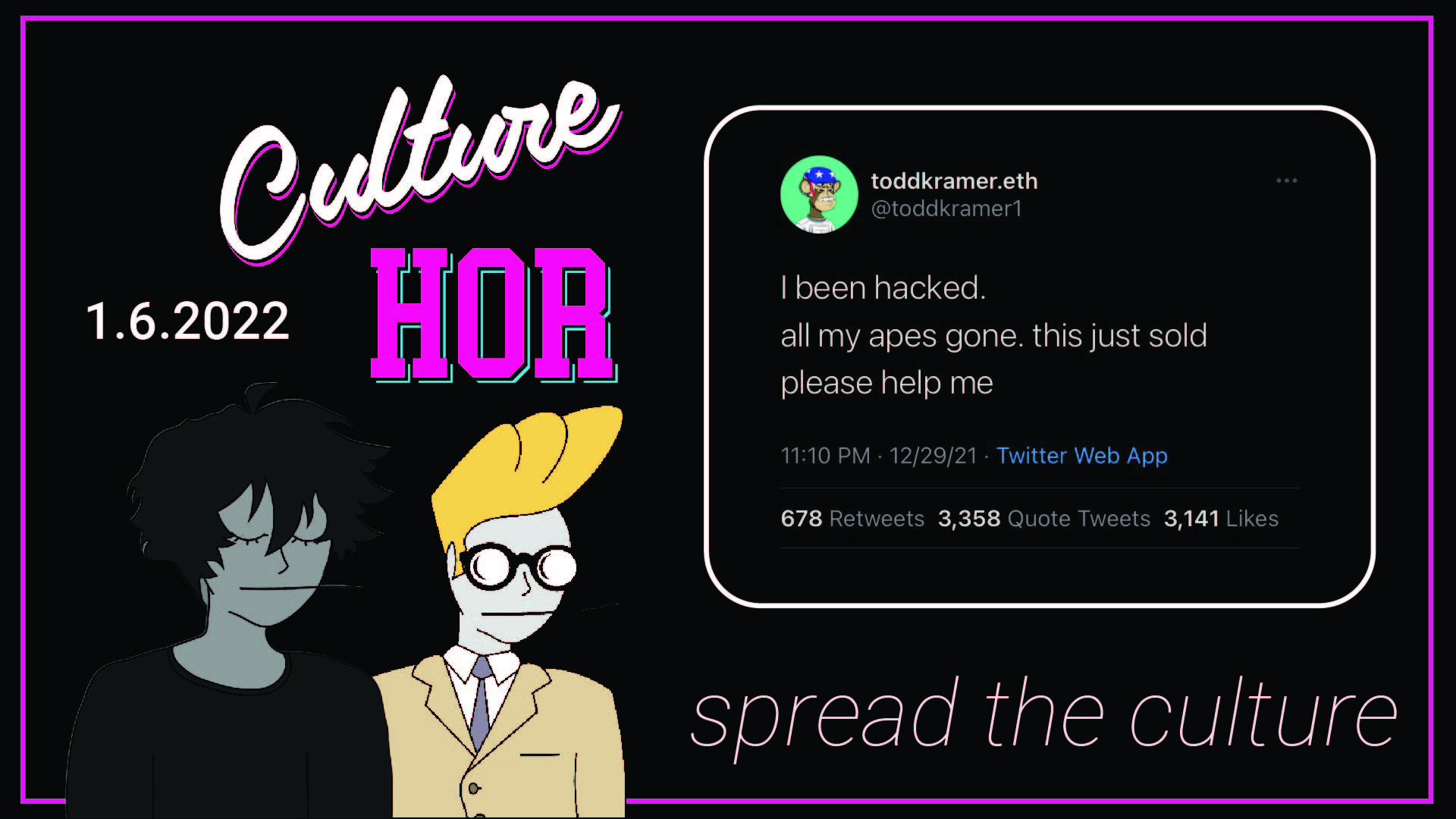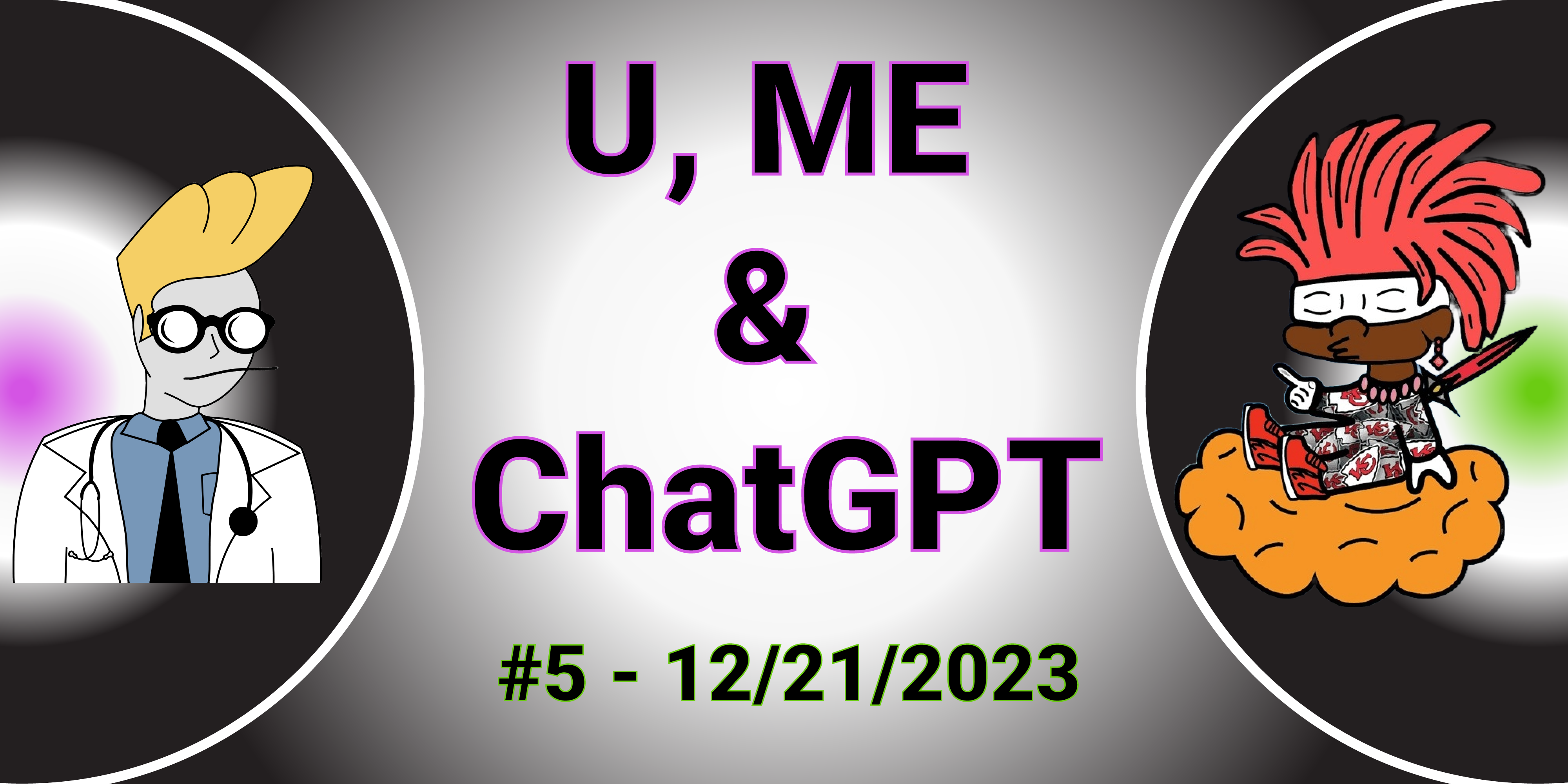El Salvador released its plans for Bitcoin City, which looks an awful lot like the Golden City once rumored to stand in the very same spot half a millennium ago. So I’m starting to suspect I might be experiencing time like the Arrival aliens tried to teach Amy Adams to. However, if time is, indeed, real, and not a constant cycle of unfathomable forces occurring simultaneously for all eternity, strap in. It’s been a hell of a day on the Internet.
Chad & El Prof

Markets
(Price changes reflect past 7 days as of 5.10.22 @ 4:20 PM EST.)

'This is not a meme chart'

If Logan Paul’s recent venture into the metaverse isn’t explanation enough for you, there may be another malignant influence on the current bear market. (If it gets El Prof to say the words, ‘Elizabeth Warren was right‘, I assume it must be major.)
Terra, the 3rd most popular stablecoin and 10th most popular crypto token by trading volume, got depegged from the fiat dollar yesterday for the second time in 48 hours. For a highly technical and detailed explanation of what that pile of word vomit means, read this. For our legally-not-financial-advice and probably totally inaccurate hot take, read on.
Terra is an algorithmic stablecoin, which basically means an automated system is constantly buying and selling from a money market account to keep the value of one Terra coin ‘pegged’ — or equivalent — to one U.S. dollar. For the length of the project up until now, said account amounted to little more than a large cash reserve, buoyed by a sister token, LUNA, the price of which crashed by 44% in the wake of the depeg. But, as of yesterday, the Luna Foundation Guard, the organization behind the coin, is loaning out $1.5B of its Bitcoin reserves to support the peg.
If you want the specifics of how and/or why, I’ll refer you again to the afore-linked guy who actually knows what he’s talking about. But the gist is, Bitcoin has a value related to the dollar, so if you’re pegging the value of your coin on a set amount of BTC and the dollar value changes, you have to buy or sell to match. Unfortunately, this delicate balancing act is being handled by an algorithm that already buckled under the weight of the USD’s volatility. BTC is, in the understatement of the century, a little more volatile.
We have three takeaways.
First, with such a massive market force going all in on Bitcoin over Ethereum, we expect the price of the former to rise and the latter to fall long term, in the wake of this market signal that, of the two, Ethereum is the less reliable.
Second, we expect the so-called stablecoin to only exhibit more depegging from here on out. Pegging a coin’s value to your own reserve is all well and good, but, at the end of the day, you only have as much money as you have. When your reserve’s value is above the coin’s, you have a cushion, sure. But when it’s below, you will always need a cash infusion to go buy more. Call it a business, a bank, or a DAO, it doesn’t matter. I know an unsustainable model when I see one.
And third, we’re fortunate to have such a precognizant CEO in our own Kevaughn, who was looking into ways to short the Terra market two weeks ago. Unfortunately, DeFi is still a casino economy (remember, they’re literally called tokens) and so most of the actually actionable parts of the real economy haven’t yet made it to crypto. But, stick with us and rest assured, even if we only impart wisdom with no tangible value, at least you can look smugly upon the masses and say, I told you so.
NFTs are HAVING A FIRE! ...sale

Unless you are a full-blown degen like our newest team member, @NFT_Nom, I’d reckon you’ve tuned out of the blistering shitstorm of an NFT nor’easter hitting the markets and culture today. Luckily, our eyes and ears from the field came through yet again with another inside scoop. So, if we are indeed your sole channel into web3, bear with us (pun intended) for a brief weather report. And/or commercial. Still not sure if we read the script correctly.
The team behind Azuki, the 2nd highest NFT collection by volume on OpenSea today and 6th highest of all time, made headlines, in typical metaverse fashion, for being doxxed. It carried marginally more impact than normal, though, as it revealed one of the founders to be none other than a user known as @ZAGABOND — the mind behind at least three rugpulls in the past year.

This sparked rumors that the project will be sold out to the Venture Vultures circling around every rotting PFP community. INB4 Yuga Labs snatches Azuki up and pretends like they invented anime.
(Bro. Like. What if… a bunch of action hero characters drawn in the manga style… had their own TV series???)
What was once a question of if, not when, Azuki joins the ranks of the Doodles or Crypto Punks is now settled as the dust reveals the ugly truth at the core of the largest NFT projects. Even the scammiest among them will have a long second life being drained to empty shells of IPs by profiteering VCs, so long as they meet a certain threshold of initial adoption. But what gives with the rest of the NFTs?
While Ethereum and the crypto market at large are plunging towards losses unimaginable to first-timers, the crypto whales are diamond handing the blue chip projects at their current ETH floors, while other projects with hodlers of less conviction are having a fire sale. In their attempts to achieve liquidity and convert gains to fiat faster than the tokens can bottom out, floors on lower profile projects are dropping more than 50%. Essentially, NFTs — being a derivative dependent upon the token value in which it was recorded — are losing value at twice the rate of coins, because of these mechanics.
Nevertheless, as Eva Longoria put it in a Twitter space earlier today, “I’m not complaining, but why are all of these projects on sale??” If, against all odds, you’ve had your eye on a Catalina Whale Mixer for a while, now may be your chance.
Put 'em up

For over a century, the Wild, Wild West has been shorthand for many cultural forces: toxic masculinity, genocidal racism, cringeworthy Will Smith vehicles. Above all else, though, it remains the ideal genre to explore the question of, ‘How low will human beings go when they know they can get away with it?’ Now, we’re living through our own version of lawlessness. And — even if the duels are won by the fastest Twitter fingers and the graphics make Red Dead Revolver look like The Revenant — it raises, and answers, the same eternal question. Without further ado, here’s proof, in the form of the latest galloping tale of crime, intrigue, and dysentery from the wild, wild world of web3.
I was sitting in an empty saloon (generously provided by the host of my Airbnb) helping myself to plastic cups of peanut butter whiskey, when I decided on a whim to DM an old Internet friend of mine. David Jones — aka @thestorydj, a preeminent Instagram poet — pivoted at about the same time as me to publishing Adobe Spark projects as NFTs and writing uncharacteristically rigorous crypto journalism for Redlion, the second-best source of news about web3. And it was through these, the most 2022 of mediums, that he shared with me the evergreen tale of a former folk hero turned black hat. In this case, one Gary Vaynerchuck.
Gary Vee is one of those rich and famous guys who appears to be mostly rich from telling everyone how rich he is, and mostly famous for the business opportunities he didn’t take. In other words, he’s the perfect fit for a crypto influencer, which, fittingly, is exactly what he became. And, although his brand is built around helping others avoid his own pitfalls and giving free game to the needy, like most populist outlaws before him, it was only a matter of time before he was shilling snake oil himself.
On Sunday, David published a deep dive into Gary Vee’s role in the ill-fated Like Nastya NFT launch. For those who missed it, a recap. Like Nastya — an 8-year-old YouTuber with the better part of 100M followers — partnered with Gary Vee to drop a collection of NFTs. He promoted the collection hard with a link to a Forbes article, giving validity to the project. Along with utility tokens you could redeem for a phone call or birthday wish from a child most famous for making unboxing videos, the hook of the project was, buy six and a seventh would be airdropped to you. Aside from the absurdity of shilling said project to a following consisting primarily of degens, entrepreneurs, and finance bros, there were few red flags, and the cosign from a patented crypto authority was more than enough to drive buyers. For a short while, anyway, until the contract was changed mid-launch to revoke the airdrop offer for the entire secondary market, the roadmap was scrubbed from the Internet, and the author of the Forbes article was reportedly fired for conflict of interest. (Read: being a close friend of Gary Vee’s and the CEO of Like Nastya’s distribution platform.)
In other words, it was your quintessential, run-of-the-mill rugpull. It also went down last August, so why am I talking about it now? Well, aside from having just learned about it last weekend — no, wait, that’s the whole thing. I only just learned about it this past weekend. Meanwhile, Gary Vee has remained one of the most influential voices in the space, with another of his projects sitting comfortably in the OpenSea Top 30 after debuting at the end of April. And, aside from David’s article and a few loose Twitter threads, I’ve found next to no mentions of the failed Like Nastya collection, not to mention Gary Vee’s role in it. Which raises the larger question: why are bad actors in the crypto space allowed, if not encouraged, to get away with it?
Gary Vee, ZAGABOND, Jake Paul, and countless others known explicitly for ripping off their supporters have not only faced no legal consequences for their scams, but continue to garner support as they launch more projects. And, given the infrequency of public apologies or even acknowledgment for these transgressions, I suspect the only lesson they’ve learned is, if it worked once, it’ll work again.
There remains little effective regulation over crypto markets and projects. Add in the macro environment of online discourse at large, in which obvious, unapologetic misinformation is applauded. And — based solely off the handful of Westerns I’ve seen, my current RDR2 replay, and a semi-recent re-read of Blood Meridian — I can say with confidence, in this sort of environment, hot air will rise. It’s not just that even the highest profile of scammers manage to pull it off. It almost seems as though, on web3, being full of bullshit is a prerequisite to being high profile. Like Jesse James and Dutch van der Linde before them, in the Wild, Wild West, the outlaws will prevail. Until Yellen sends in the Pinkertons, but… well, we all know how it goes from there.



